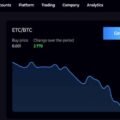
In the dynamic realm of financial markets, trading, and risk management stand as inseparable components that exert a profound impact on investors’ success or failure. Trading, characterized by the strategic buying and selling of financial instruments to seize market opportunities, is complemented by the pivotal role of risk management in preserving capital and ensuring sustained viability. An understanding of the nuanced relationship between trading and risk management is imperative for any investor traversing the intricate and often unpredictable landscape of financial markets.
The Nature of Trading:
At its essence, trading involves the acquisition and divestiture of financial instruments such as stocks, bonds, commodities, and currencies, all with the overarching goal of generating a profit. Traders employ diverse strategies, including day trading, swing trading, and long-term investing, guided by considerations of risk tolerance, time horizon, and market outlook.
The allure of potential gains can sometimes overshadow the inherent risks associated with trading, leading many investors to overlook the critical importance of effective risk management.
The Role of Risk Management:
Risk management constitutes a set of sophisticated practices and strategies, including the use of trading computers, meticulously deployed to identify, assess, and mitigate potential losses. Operating as an impervious barrier amid the uncertainties and inherent volatility of financial markets, proficient risk management serves not only to protect capital but also to endow traders with the resilience needed to navigate the long-term landscape successfully.
This multifaceted approach involves not only establishing clear risk-reward ratios but also fine-tuning maximum loss thresholds and utilizing essential tools such as stop-loss orders to judiciously curtail potential downsides, thereby enhancing the overall robustness of a trader’s risk mitigation strategy.
Understanding the Interconnection:
Trading and risk management are intricately woven into a symbiotic relationship, forming the backbone of financial success. Without robust risk management, meticulously devised trading strategies risk succumbing to significant financial setbacks. Conversely, in the absence of active trading, risk management becomes a dormant tool, lacking purpose and efficacy.
Achieving a nuanced equilibrium between the two not only acts as a protective measure against potential pitfalls but also cultivates a dynamic synergy. This equilibrium optimizes profit potential, allowing traders to navigate the intricate web of financial markets with resilience while simultaneously mitigating the impact of adverse market movements and ensuring sustainable growth.
Setting Risk Parameters:
A fundamental aspect of effective risk management entails the establishment of clear risk parameters. Traders must delineate the amount of capital they are willing to risk on each trade, adhering to predefined limits.
This not only acts as a preventive measure against catastrophic losses but also ensures that no single trade holds the potential to wipe out an entire trading account. Establishing risk parameters necessitates a deep understanding of one’s risk tolerance, financial goals, and prevailing market conditions.
Utilizing Stop-Loss Orders:
In the risk management arsenal, stop-loss orders emerge as invaluable tools. These orders automatically initiate a trade upon reaching a predetermined price level, effectively restricting potential losses.
Traders can set stop-loss orders based on a percentage of their total capital or utilize technical indicators to identify key support levels. The disciplined use of stop-loss orders adds a protective layer to trades, averting emotional decision-making amidst the volatility of market fluctuations.
Diversification as a Risk Mitigation Strategy:
Diversification stands out as another critical element of risk management. By dispersing investments across diverse asset classes, sectors, and geographic regions, traders can mitigate the impact of adverse events affecting specific markets.
This time-tested strategy enhances portfolio resilience, minimizing the correlation between individual assets and fostering a more stable and balanced investment approach. Furthermore, diversification provides a hedge against unforeseen economic downturns and geopolitical uncertainties, reducing vulnerability to systemic risks and promoting a more robust and adaptive investment portfolio.
Continuous Monitoring and Adaptation:
Given the dynamic nature of markets, risk management is not a one-time task but an ongoing process demanding continual monitoring and adaptation. Traders must stay abreast of economic indicators, geopolitical events, and market sentiment to adjust risk management strategies accordingly.
Regular reassessment of risk parameters and updating stop-loss levels is crucial, enabling traders to navigate evolving market conditions successfully. This commitment to vigilance and flexibility ensures that risk management strategies remain robust in the face of ever-changing market dynamics, ultimately contributing to the resilience and adaptability of a trader’s overall approach.
Conclusion:
In the realm of trading, success hinges not solely on the ability to identify profitable opportunities but also on the adept management of risks. Trading and risk management share an intricate connection, with one providing the canvas and the other serving as the brushstroke that shapes the final masterpiece. Investors who recognize and embrace this symbiotic relationship are better equipped to navigate the complexities of financial markets, thereby enhancing their prospects for long-term success and financial prosperity.

